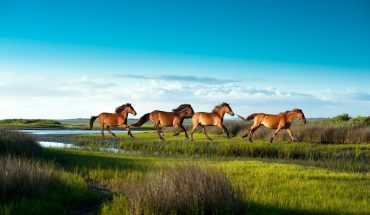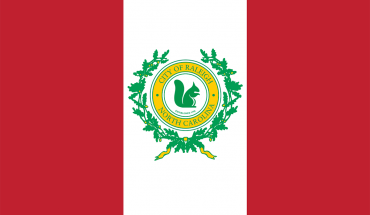A community works together to restore a pillar of early education for black children.
by Lori D.R. Wiggins | photography by Bob Karp
When Ella Perry reminisces about elementary school, she’s thinking of a framed one-story, weatherboard building in Garner. But she’s also thinking of a time when African American children were dependent on the strength, vitality and sacrifice of their community—and an unprecedented atmosphere of interracial collaboration—for their schooling.
Perry is 90 now. And that weatherboard building—the Panther Branch Rosenwald School—now belongs to Juniper Level Missionary Baptist Church (JLMBC). For nearly two decades, Panther Branch alumni have worked along with the JLMBC Alliance, a fiduciary arm of the church, to champion the restoration and preservation of the building. “It’s keeping memories alive,” said Perry. “That school means so much, especially to those of us who are still living.”
The Rosenwald answer
In the early 1900s, there was little American investment in the education of African-American children in the rural South—beyond, perhaps, scant shanty school structures and barely-educated teachers. Philanthropist Julius Rosenwald helped fill the gap. Rosenwald was the son of German-Jewish immigrants, who made a fortune as president of Sears, Roebuck and Company. In 1911, he met black educator Booker T. Washington, the son of slaves and founder of the Tuskegee Institute (of which Rosenwald soon became a trustee). Up to this point, other philanthropists and religious denominations had successfully launched upper-level training grounds, including Shaw and St. Augustine’s Universities in Raleigh, but one void remained: the education of young black children. Washington asked Rosenwald to help him improve their opportunities.
At the time, Rosenwald had a history of using matching grants to help fund black YMCAs and agreed to do the same to start a few small, rural Alabama schools. The way it worked: Rosenwald would use his own funds, but require matching investments from local governments, school systems and residents. That way, he reasoned, his philanthropy could push states toward greater public responsibility and inspire interactions between the races for greater good.
The first Rosenwald School was built in 1913. By 1915, the year Washington died, they’d built more than 80 schools across three states. After his death, the Rosenwald Fund was established to continue the work. By the time the program ended in 1932, they had built more than 5,350 Rosenwald schools, homes for teachers and vocational education spaces in 15 states. North Carolina outpaced all other states, constructing 813 Rosenwald buildings, including 787 schools, 18 teacher’s homes and eight vocational education shops. Wake County alone was home to 21 schools.
“Everyone is happy”
The Panther Branch School (also now known as the Juniper Level School) opened in 1926 for children from kindergarten through sixth grade. It closed in 1957, three years after Brown v. Board of Education deemed segregation in public school unconstitutional. Other Rosenwald Schools faced a similar fate. But by then, countless children had been benefactors of what is said to be the most significant advancement to black education in the 20th century. They had better schools, better teachers and opportunities that surpassed the previous, substandard offerings.
They also made sweet memories.
“I remember walking two miles to school every morning; 50 to 60 children walking together, respecting each other,” said Perry, a Shaw University alumna and retired Wake County educator. On early arrivals, she recalls, “my brothers would make the fire in the big, potbelly stove. We would huddle around the stove until we got warm; then, we would have devotion.”
Perry smiled. “We’d sing Good Morning, Merry Sunshine,” she said, singing the lyrics, “Good morning, merry sunshine! How did you wake so soon?” They also welcomed each day with the Lord’s Prayer, a “salute to the flag” and, lastly, America the Beautiful. On Fridays, the girls learned to knit and crochet while the boys had 4H and Boy Scouts. In the evenings and on weekends, community women learned home-making tips. And in the summer, a bookmobile operated as a library.
Everything was community-driven. “I listened to my dad talk about how the men in the community built the school,” said Perry. The timber came from her uncle’s farm, and neighbor farmers donated nails and other materials. “That’s the way it was then,” she added. “One big family. We became very close. We saw each other every day; at school throughout the week, and we worshipped together on Sunday.”
Like their ancestors, the alumni group and the Alliance have hosted countless community-wide fundraisers over the years to raise money for the restoration project. There have been golf tournaments, Community Days, a 12 Tribes of Israel series and a standing-room-only Baby Contest.
Perry is pleased. “It’s been overwhelming, but very enjoyable—and very rewarding,” she said, applauding community support. “People have worked hard to see that school right there, in that community, restored for the people in that community. Everyone is happy to see that building restored.”
Wake County jewel
Many Rosenwald Schools have disappeared. Most were either abandoned, bulldozed or considerably altered by overseers unaware of their history; others have fallen short on resources during restoration attempts. Today, only four remain in Wake County: Panther Branch, the W.E.B. DuBois School in Wake Forest; Riley Hill School in Wendell; and St. Matthews School in Knightdale. Each is listed on the National Register of Historic Places. Panther Branch is the only one registered as a Wake County Historic Landmark, said Gary Roth, president and CEO of Capital Area Preservation, Inc., which helps the Wake County Historic Preservation Commission preserve and promote the use of districts and landmarks for education, enrichment and fun.
“All the bones were there; it had been maintained, to a degree, and best preserved,” Roth said of the Panther Branch building. “It was a prime candidate to be brought back to its original appearance—and it has got the church and its group of alumni that recognizes the significance of it and that really cares about it. That makes it stand out. It’s our little jewel in Wake County.”
The Panther Branch project broke ground in 2009 with a Community Day sponsored by Perry’s alumni group and the JLMBC Alliance. With the expertise of downtown Raleigh firm Maurer Architecture and two grants from the Rosenwald Foundation, restoration started on the 3,000-square-foot building in March 2013.
It’s been 30 years in the making, said Rev. Jeffrey Robinson, pastor of Juniper Level Church. The school building had been used as a fellowship hall in the 1980s; nothing since. “Just to see the doors open again, it’s major for us,” said Robinson. “It’s going to strengthen our church’s faith.”
In Phase I, the building was cleaned and rid of asbestos, replica windows were installed and the outside was painted. In Phase II, the original pillars and footing supports were hoisted into the air to shore up the foundation. Phase III is underway, with HVAC, electrical, plumbing, sheetrock and other finishing touches. The Panther Branch building will become a fellowship hall for meetings, weddings and receptions, as well as a center for community outreach. “I am excited about the progress we’ve made,” Perry said, crediting alumni for the money to replace the roof, windows and floors.
Community and family
Community connections to Panther Branch Rosenwald School run as deep as the roots of the juniper tree that gives the nearby church its name. When Jansen Mitchell of Squared Corners Construction company entered the bidding process in Phase I of the restoration project, he unknowingly reached back to his own family history: His grandfather, James Turner, had attended Panther Branch. With Squared Corners’ bid and plans for the third phase of the project approved, Mitchell is gearing up to complete the restoration project.
“It means a lot to me that I’m working on the school where one of the men I look up to the most got his start in education,” said Mitchell. “I’m honored to be able to do this.”
His grandfather started school at Panther Branch in 1943 and has especially fond memories of the biscuits and cornbread they ate at the Masonic Lodge across the street. Turner, in turn, is proud to watch his grandson carve a path from a blueprint left by his own footprints—he owned Turner Construction, Co., specializing in water, sewer and underground power lines. Of the renovation, Turner says: “It’s going to be great to see.”
William Johnson, 81, has “a lot of memories” of the school: classroom partitions opened for Friday plays, taking his turn to fire up the potbelly stove and riding to school with his aunt, who was the principal. These memories make the preservation efforts worthwhile. “That was where I first started my education. It’s my roots, where I began,” he said. “The school will hold those memories, so it’s a duty—and an honor, in a sense—to do whatever I can to preserve it.”








